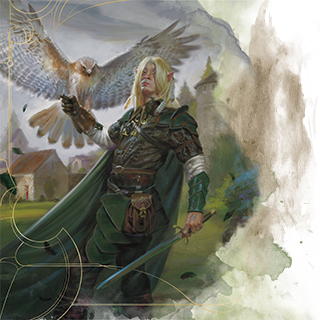
Prerequisite: You must be naturally blind to all forms of light, or have lived without vision for at least five years.
You are naturally blind to lightness and darkness (including darkvision) or have lost these senses years ago. This has allowed you to use your mind’s potential to embrace and enhance your other senses, including senses that are (or seem) magical.
- You gain blindsight to a distance of 45’ and tremorsense to 60’. Beyond 60 feet you have no special senses and remain without the sense of vision. Your hearing, smell, touch and other non-visual senses are neither improved nor impaired by this feat.
- Your blindsight does not allow you to perceive colors and all visual details are muted and difficult to decipher. You have disadvantage on purely visual perception and investigation checks then these checks are trying to detect fine details (smaller than 1”) and to read and write non-magical writing. You are not disadvantaged when trying to detect creatures, see through illusions, recognize previous acquaintances, shoot at an enemy if it is within 45’, nor similar checks.
- You ignore magical and natural darkness and dim light, but you are not immune to magic that has a visual effect or source. This is because your other senses have expanded to allow you to perceive visual effects. You have advantage on rolls to detect purely visual illusions and resist gaze based effects, such as the Basilisk’s Petrifying Gaze, but in all other ways you can be affected by spells and abilities that are within the range of your blindsight normally. For example your senses are affected by the Fog Cloud spell as if you were sighted.
- Unless you are both magically blinded and deafened, you are immune to the blinded condition. You are still functionally blinded outside the range of your blindsight as normal.
- If a ranged attack, spell, or similar effect originates from beyond these senses, you can infer, with a DC 10 perception check, the general direction, but not distance, of the attack. You do this by observing the attack and it’s effects, and so attacks that change direction, or have no perceivable path, may cause the DM to raise the DC as appropriate. Adjustments might also be made if you are able to hear verbal components of a spell or a warrior’s shouted “Kai.” In no case are abilities such as the shield spell or the Monk’s Deflect Missiles ability affected by the origination point of the attack.
- This feat does not stack with any other senses. When you have multiple sources of blindsight or tremorsense you must choose one of the sources for these senses and the other source(s) are treated as inert and provide no additional benefits. The use of truesight may also neutralizes the affects of this feat since you must choose between the vision provided by truesight and the vision provided by this feat.
You loose the benefits of this feat if at any time you have light based vision through another means (such as through Devil’s Sight, spells such as Darkvision, magic items, and healing). If you loose this ability you may not regain it without first loosing your new vision and then maintaining your concentration, as if you were focused on a spell, for one hour afterwards. You are blinded and deafened during this hour of concentration, but you are not incapacitated.









Comments